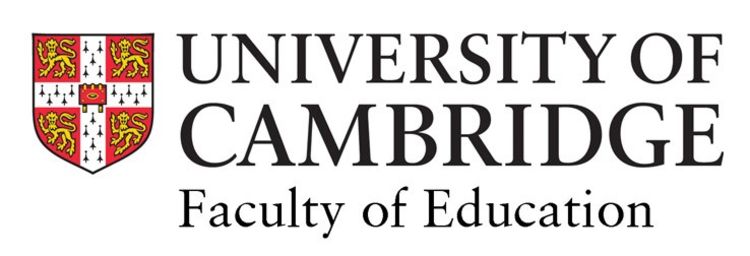

Poor professional development may explain failure of push to promote physical health in primary schools
The government’s £320 million drive to help primary schools promote children’s physical health is in danger of failing because most of the teacher development it funds is ineffective, new research on similar initiatives suggests.

The government’s £320 million drive to help primary schools promote children’s physical health is in danger of failing because most of the teacher development it funds is ineffective, new research on similar initiatives suggests.
Researchers at the University of Cambridge examined the training given to teachers who are charged with implementing new schemes of work in PE, sports, ‘active lessons’ and other programmes designed to promote physical activity in schools. They found that key ingredients were often missing from the training teachers received.
In a review of trials that covered data from hundreds of schools internationally – several of them in the UK – researchers found little evidence, for example, that teachers had clear goals to work towards, received regular feedback on their practice, or were provided with resources that prompted the programme’s integration into the school day.
The study suggests that these shortcomings make it significantly less likely that the health-promoting activities in which they are being trained would be sustained by teachers, or have a positive impact on pupils.
Professional development activities that have a lasting impact look like ongoing conversations between providers and teachers. What we mostly saw in these programmes were isolated instructional events.
The findings may also explain why multiple evaluations of global efforts to promote children’s physical activity in schools suggest that many of these endeavours are failing. In England, the government currently commits £320 million of funding per year to improving PE, physical activity and sport in primary schools through its PE and sport premium. There is little evidence to determine what impact this is having on pupil outcomes. The next slice of funding will be released on Monday, 24 October. Through it, the average primary school can access about £18,000, some of which is expected to be spent on teacher professional development. Schools decide how to spend their allocation.
Mairead Ryan, a doctoral researcher at the Faculty of Education and Medical Research Council (MRC) Epidemiology Unit, University of Cambridge, said that schools needed clearer guidance on how to invest in appropriate training. “This funding can have a tremendous impact on children’s health and education, but schools could be better supported in identifying and delivering effective professional development for their staff,” she said. “Our findings highlight features in professional development programmes that school staff can look for and that providers should include.”
Many governments around the world are promoting school-based physical activity programmes in response to rising childhood obesity rates and associated concerns that most children and adolescents are not sufficiently active. Judging by multiple academic assessments of the evidence, the results have been modest. In 2019, Cambridge researchers found that the impact of 17 different school-based programmes on children’s physical activity was “non-existent and non-significant”. More recently, a larger review of programmes involving 66,000 children concluded they had resulted in “little to no increase” in physical activity.
The new study suggests that this may be because teachers are often not properly trained to deliver the programmes in question.
Our findings are especially timely given that additional funding is not guaranteed in future years
Ryan and her team reviewed the staff training documented in reports from 51 randomised control trials of new school-based physical activity programmes. Eight of these trials were in Britain, eight in the United States, 10 in Australia, and the remainder in 16 other countries. Collectively, they covered tens of thousands of pupils in hundreds of schools: on average, each trial gathered evidence from 14 schools and 800 pupils.
“Professional development activities that have a lasting impact look like ongoing conversations between providers and teachers,” Ryan said. “Instead, what we mostly saw in these programmes were isolated instructional events.”
Several specific training features did appear to be associated with ‘successful’ programmes, meaning that teachers either implemented the new initiative as intended, or they resulted in improvements in pupils’ health outcomes, or both.
Effective training in this sense tended to involve a clear demonstration of the activity teachers were meant to be implementing, gave them opportunities to practise it, set clear goals, allocated planning time, provided them with feedback, and ensured there were resources – like sports equipment – within sight to prompt the programme’s integration into the school day.
Perhaps surprisingly, however, these characteristics were absent from most of the training programmes the researchers reviewed – the structures of which varied wildly. Each programme was analysed using a large, standardised taxonomy which has been devised specifically to assess intervention programmes aimed at changing behaviour or practice. Just one characteristic from this list appeared in the majority of cases. This was “Instruction on how to perform the behaviour” – in other words, explaining what the teachers were meant to be doing.
“Quality professional development is often overlooked in the context of primary PE and schools should be supported to use this funding to invest in reliable professional development with tried and tested features.” said Professor Riikka Hofmann, from the Faculty of Education, University of Cambridge, who contributed to the review. “Pupils bear the costs of this, particularly those with limited opportunities to be active outside school.”
Dr Esther van Sluijs, Programme Leader at the MRC Epidemiology Unit, said: “Regular physical activity is important for children’s physical health as well as their well-being and academic performance. Our findings are especially timely given that this additional funding is not guaranteed in future years.”
The research is published in the International Journal of Behavioural Nutrition and Physical Activity.
Image in this story: pupils in a PE lesson
(Faculty of Education image library)